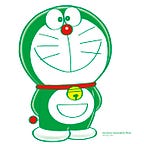Color Usage in Jojo Rabbit and What They Mean
Brilliant use of color is very much noticeable in Taika Waititi’s 2019 film, Jojo Rabbit. Some scenes capturing the streets of Germany may remind the movie fans of the Grand Budapest Hotel. And the swimming pool scene may remind photographers of the works of Maria Svarbova. Aside from the visually pleasing aspects of the color usage, the colors in this movie are something more than matching outfits and decorations.
Khaki
In the movie, the Nazi uniforms are khaki. And throughout the first half of the movie, Jojo is wearing clothes that are mostly khaki or a shade of brown, indicating that he firmly believes in the Nazi regime. Even his best imaginary friend, Hitler, of course, is wearing a khaki uniform. The Jewish girl he meets later on, Elsa, is also wearing the same color underneath her sweater, meaning that her life has been influenced greatly (in a different way than Jojo) by the Nazis.
Green
While everyone else is wearing khaki uniforms at the training camp, Captain Klenzendorf and Finkel alone are wearing green uniforms. Rosie is often seen wearing green as well. Green seems to represent a “mask”; those who have beliefs or facts about themselves they are forced to hide.
Captain Klenzendorf pretends to be loyal to the leader of the country, and acts as if he is interested in women; however, his façades seem to be breaking even in the beginning of the movie where he becomes more and more unkempt. Rosie, Jojo’s mother, is hiding the fact that she hid Elsa behind the walls of her house.
Red
Elsa is first seen wearing a red sweater, with a khaki shirt underneath. She is seen wearing the latter because of the influence the Nazi regime has in her life. Red is often worn by the characters that long for freedom.
In the last half of the movie, Jojo is also seen wearing clothes that is close to a shade of red, meaning that he too, longs for freedom from having to hide Elsa. Rosie, Jojo’s mother, wears red shoes which she dances in. She makes the symbol of red obvious by stating, “dancing is for people who are free.”
Blue
Blue is the color that appears the least in this film. Jojo finds Rosie dead after following a blue butterfly, which he finds captivating. Rosie is last seen in the movie wearing a blue coat. And she is gone after doing “what [she] could.”
Rosie may be gone, but she didn’t give up neither on hope (blue coat) nor freedom (red shoes). Blue may have appeared the least in order to reflect the abject reality of the wartime where hope wasn’t something one took for granted.
Harmony of the colors
The war scene is a burst of colors as it also is a burst of grenades and gun powders. Captain Klenzendorf and Finkel appear with their newly decorated uniforms, eventually achieving what they were hoping for — being themselves.
When the war is finally over, Jojo talks with his friend Yorki beside the abandoned chairs crates which include all primary colors that appeared in the movie so far. The tension was finally over, and it was the beginning of harmonization.
More Symbolism
- One of the most heartwarming scenes are when Rosie shows Jojo her dance. Right before this scene, she mentions how Jojo is growing up too fast, and that he must celebrate life. And oddly enough, Jojo is the one walking on the road while Rosie walks on top of a tall curb. When revisited, anyone would think the roles were reversed in this scene. This is to show that Rosie knew how to enjoy and celebrate life while Jojo has grown numb.
- The reason the main character is so young — 10 years of age — is most likely because it shows how one is easily indoctrinated. And perhaps remind us that we all have an innocent little kid in our core. In the end, we are all humans who just need to be washed away from ignorance.
- Rabbit is a symbol for the Jewish people. Jojo claims that he is able to kill a rabbit, but he doesn’t. This was an allusion to what happens with him and Elsa later on in the movie. He ends up being the key to the cage Elsa was in; even when he could have urged Elsa to stay inside, he suggests that they go outside.
The Ending
What happens to Jojo and Elsa after? This may be what many were wondering while giving the blank stares at the credits. The answer is, it doesn’t matter. This movie isn’t about the romance between Jojo and Elsa. What matters is that Jojo and the rabbit (Elsa) got what they wanted — freedom.
